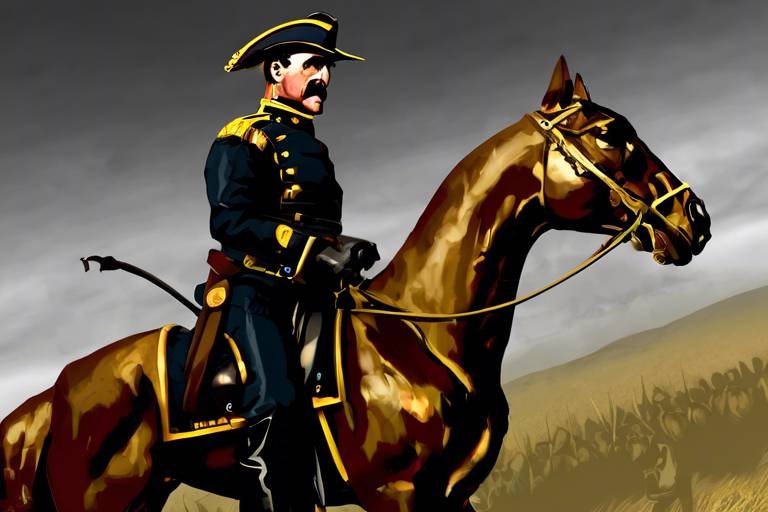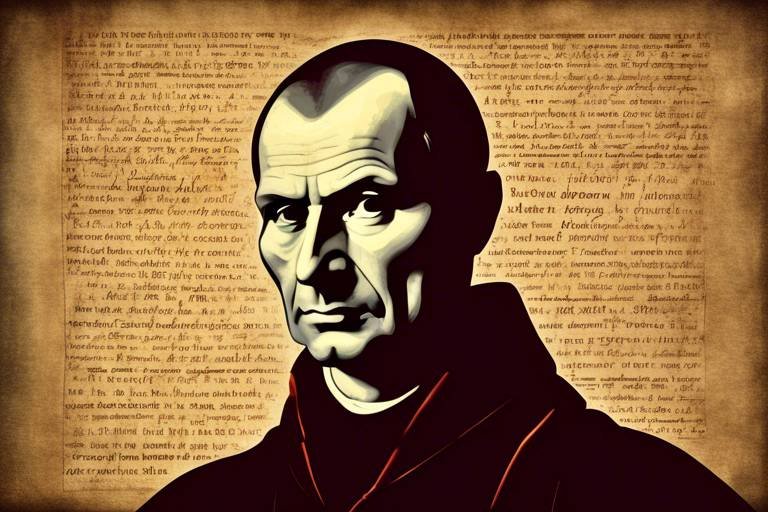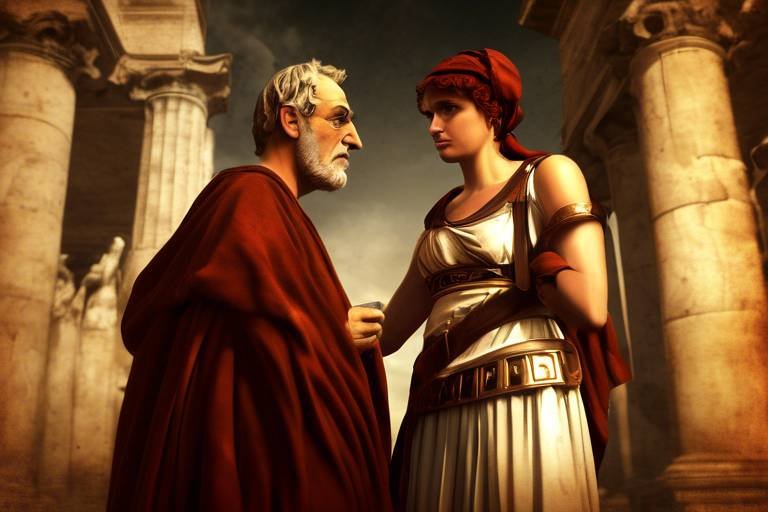Theodosius: The Last Roman Emperor
Theodosius, known as the last Roman Emperor, left an indelible mark on the political, religious, and military landscape of the 4th century AD. His reign was a tumultuous time of change and conflict, shaping the future of the Roman Empire and Europe as a whole.
Born into a prestigious family, Theodosius rose to power through his military prowess and strategic acumen. His ascent to the throne was marked by challenges, navigating the complex web of political intrigue and power struggles that defined the empire at that time.
One of the defining aspects of Theodosius' rule was his unwavering support for Christianity. He implemented strict religious policies, culminating in the Edict of Thessalonica in 380 AD, which declared Christianity as the state religion. This move sparked tensions with the pagan minority in the empire.
On the military front, Theodosius faced constant threats from barbarian invasions, prompting him to launch numerous campaigns to defend the empire's borders. His efforts to fortify key territories and repel external threats were crucial in maintaining the empire's integrity.
Following his death, the empire was divided among his sons, leading to the decline of the Western Roman Empire. This division had far-reaching consequences for European history, setting the stage for the rise of the Byzantine Empire and shaping the course of events for centuries to come.
Theodosius' legacy as the final ruler of a unified Roman Empire is a subject of historical debate. While some praise his contributions to Christianity and his military achievements, others criticize his policies and leadership style. Comparisons with other notable emperors shed light on his unique place in Roman history.
Modern historians continue to assess Theodosius' reign, examining the controversies surrounding his decisions and their long-term impact. By studying his rule in the context of other Roman emperors, we gain a deeper understanding of the complexities of his legacy and the enduring significance of his reign.

Early Life and Rise to Power
Exploring the reign and legacy of Theodosius, the final ruler of a unified Roman Empire, and his impact on the empire's political, religious, and military landscape during the 4th century AD.
Detailing Theodosius' upbringing, military successes, and eventual ascension to the throne of the Roman Empire, navigating the challenges of a divided empire and political intrigue.
Theodosius was born in Spain in 347 AD to a distinguished Roman family. His father, Theodosius the Elder, was a high-ranking military officer, which provided young Theodosius with a solid foundation for his future endeavors. Growing up in a turbulent period marked by constant power struggles and invasions, Theodosius honed his military skills and leadership qualities through various campaigns across the empire.
Despite facing numerous obstacles, including the exile of his family due to political rivalries, Theodosius managed to distinguish himself on the battlefield, earning the respect of both soldiers and politicians. His military successes, coupled with his diplomatic acumen, eventually caught the attention of the reigning emperor, Gratian, who appointed Theodosius as co-emperor in 379 AD.
Ascending to the highest office in the empire, Theodosius faced the daunting task of unifying a fractured realm torn apart by internal strife and external threats. Through a combination of shrewd political maneuvering and decisive military actions, he managed to stabilize the empire and restore a semblance of order, earning him the title of "The Great" among his subjects.
With a keen understanding of the complex dynamics of Roman politics and a firm commitment to upholding the integrity of the empire, Theodosius embarked on a transformative journey that would shape the course of history and solidify his legacy as the last Roman emperor to rule over a unified realm.
- What was Theodosius' stance on Christianity?
- How did Theodosius deal with the pagan population in the Roman Empire?
- What were the major military campaigns led by Theodosius?
- How did the division of the Roman Empire after Theodosius' death impact European history?
- What is the modern historical assessment of Theodosius' reign?

Religious Policies and Edicts
Exploring the reign and legacy of Theodosius, the final ruler of a unified Roman Empire, and his impact on the empire's political, religious, and military landscape during the 4th century AD.
Detailing Theodosius' upbringing, military successes, and eventual ascension to the throne of the Roman Empire, navigating the challenges of a divided empire and political intrigue.
During his rule, Theodosius implemented significant religious policies that shaped the Roman Empire's cultural and social fabric. One of his most notable actions was the endorsement of Christianity as the state religion, a move that had profound implications for the empire. The Edict of Thessalonica issued in 380 AD, also known as the "Cunctos populos" decree, declared Christianity as the official religion of the Roman Empire, marking a pivotal moment in the history of Christianity and Roman governance.
Theodosius' religious policies were not without controversy, particularly in his conflict with paganism. He actively suppressed pagan practices, ordered the closure of pagan temples, and banned pagan rituals, leading to a clash between the Christian majority and the pagan minority within the empire. This tension created a rift in the societal fabric of the Roman Empire, with repercussions that echoed for centuries to come.
Aside from his religious endeavors, Theodosius also focused on strengthening the empire's military capabilities. He led successful campaigns against barbarian invasions, bolstered the defenses of key territories, and worked tirelessly to safeguard the Roman borders from external threats. His military strategies played a crucial role in maintaining the integrity of the empire during a tumultuous period of history.
Following Theodosius' death, the Roman Empire was divided among his sons, marking the beginning of the end for the unified empire. The division ultimately led to the decline of the Western Roman Empire, paving the way for significant changes in European history. The repercussions of this division reverberated throughout the centuries, shaping the geopolitical landscape of Europe.
Reflecting on Theodosius' legacy as the final ruler of a united Roman Empire, his support for Christianity, and the profound influence of his reign on the future of Europe and the Byzantine Empire. His contributions to Christianity and the political landscape of the Roman Empire left an indelible mark on history, shaping the course of events for generations to come.
Modern historians have offered varied perspectives on Theodosius' reign, with debates surrounding the effectiveness of his policies and the long-term consequences of his decisions. Criticisms have been leveled at his religious intolerance and heavy-handed approach to governance, while others praise his military prowess and contributions to the spread of Christianity. Theodosius remains a complex figure in Roman history, subject to ongoing scholarly analysis and interpretation.
Comparing Theodosius' leadership style, religious policies, and military strategies with those of renowned Roman emperors like Augustus, Constantine the Great, and Diocletian provides valuable insights into his unique place in history. Each emperor brought their own strengths and weaknesses to the throne, shaping the Roman Empire in distinct ways and leaving behind a diverse legacy for future generations to ponder.

Conflict with Paganism
During Theodosius' reign as the Roman Emperor, a significant conflict arose between Christianity and Paganism, leading to a tumultuous period of religious tension within the empire. Theodosius, a staunch supporter of Christianity, implemented policies that aimed to suppress pagan practices and elevate Christianity to the status of the state religion. One of the pivotal moments in this conflict was the closure of pagan temples and the outlawing of pagan rituals, which sparked outrage among the pagan population.
Theodosius' aggressive stance against Paganism not only fueled animosity between the Christian majority and the pagan minority but also raised questions about religious freedom and tolerance within the empire. The enforcement of Christianity as the dominant faith created a divide that reverberated through the social fabric of Roman society, pitting adherents of different beliefs against each other.
As the conflict escalated, tensions simmered, and instances of violence erupted in various regions where pagan traditions clashed with the growing influence of Christianity. Theodosius' unwavering commitment to promoting Christianity as the sole legitimate religion of the empire set the stage for a prolonged struggle between the old pagan traditions and the emerging power of the Christian faith.

Military Campaigns and Defenses
Theodosius faced numerous military challenges during his reign as the Roman Emperor. One of his most significant military campaigns was against the Visigoths led by Alaric, who invaded the Eastern Roman Empire. Theodosius successfully repelled the Visigoths and negotiated a peace treaty with them, allowing them to settle in the Balkans under Roman suzerainty. This strategic move not only secured the Eastern borders but also provided the empire with a buffer against further barbarian incursions.
In addition to dealing with external threats, Theodosius also focused on strengthening the empire's defenses. He initiated the construction of fortifications along the Danube River to protect the northern frontier from invading tribes. These defensive structures not only deterred potential invaders but also served as strategic outposts for Roman troops to monitor and respond to any incursions effectively.
Furthermore, Theodosius reorganized the Roman military, implementing reforms to improve training, discipline, and coordination among the legions. By modernizing the army and increasing its efficiency, he was able to better defend the empire's borders and respond swiftly to any emerging threats. Theodosius' emphasis on military readiness and defense laid the groundwork for the Byzantine Empire's military strength in the centuries to come.

Division of the Empire
After the death of Theodosius in 395 AD, the Roman Empire faced a significant division that would shape the course of European history. The empire was split between Theodosius' two sons, Honorius and Arcadius, with Honorius ruling the Western Roman Empire based in Rome, and Arcadius governing the Eastern Roman Empire from Constantinople. This division marked the beginning of the end for the unified Roman Empire, as the two halves grew increasingly independent and faced distinct challenges.
While the Eastern Roman Empire, also known as the Byzantine Empire, continued to thrive for centuries, the Western Roman Empire faced a series of invasions, internal conflicts, and economic crises that ultimately led to its collapse in 476 AD. The division of the empire into two distinct entities not only weakened its overall strength but also set the stage for the rise of new powers in Europe.
The split between the Western and Eastern Roman Empires had long-lasting consequences, with the Eastern Empire enduring for nearly a thousand years after the fall of the West. The Byzantine Empire would become a center of culture, trade, and power in the medieval world, while the Western territories descended into chaos and fragmentation, laying the groundwork for the medieval kingdoms that would emerge in the following centuries.

Legacy and Historical Impact
Theodosius the Great, the last Roman Emperor to rule over a united empire, left a profound impact on the political, religious, and military landscape of the 4th century AD. His legacy reverberates through history, shaping the future of Europe and the Byzantine Empire.
As a devout Christian, Theodosius played a pivotal role in promoting Christianity and solidifying its position as the state religion. His support for the Church was unwavering, culminating in the Edict of Thessalonica in 380 AD, which declared Christianity the official religion of the Roman Empire.
Furthermore, Theodosius' policies towards paganism were marked by suppression and intolerance. He ordered the closure of pagan temples, banned pagan rituals, and sought to eradicate all remnants of the old faiths. This aggressive stance created tensions between the Christian majority and the dwindling pagan minority.
On the military front, Theodosius faced formidable challenges from barbarian invasions threatening the empire's borders. His strategic military campaigns and efforts to fortify defenses were crucial in safeguarding Roman territories from external threats, although the empire continued to grapple with ongoing incursions.
Following Theodosius' death, the empire was divided among his sons, marking the beginning of the end for the Western Roman Empire. The division had far-reaching consequences, contributing to the eventual collapse of the Western Empire and reshaping the course of European history.
Theodosius' reign as the last unified Roman Emperor left a lasting imprint on the historical narrative. His contributions to Christianity, his military endeavors, and the division of the empire all played significant roles in shaping the future trajectory of Europe and the Byzantine Empire.
Modern assessments of Theodosius' rule are varied, with scholars debating his effectiveness as a ruler and the implications of his policies. His legacy stands as a complex tapestry of religious fervor, military prowess, and political intricacies that continue to captivate historians and enthusiasts alike.

Historical Assessments and Criticisms
Exploring the reign and legacy of Theodosius, the final ruler of a unified Roman Empire, and his impact on the empire's political, religious, and military landscape during the 4th century AD.
Detailing Theodosius' upbringing, military successes, and eventual ascension to the throne of the Roman Empire, navigating the challenges of a divided empire and political intrigue.
Examining Theodosius' religious policies, particularly his support for Christianity and the enforcement of Christianity as the state religion, including the infamous Edict of Thessalonica in 380 AD.
Discussing Theodosius' suppression of pagan practices, the closure of pagan temples, and the outlawing of pagan rituals, leading to tensions between the Christian majority and pagan minority in the empire.
Analyzing Theodosius' military campaigns against barbarian invasions, his efforts to fortify the empire's borders, and the challenges of defending the Roman territories from external threats.
Exploring the division of the Roman Empire between Theodosius' sons after his death, the subsequent decline of the Western Roman Empire, and the lasting impact of this division on European history.
Reflecting on Theodosius' legacy as the last ruler of a unified Roman Empire, his contributions to Christianity, and the significance of his reign in shaping the future of Europe and the Byzantine Empire.
When examining Theodosius' reign from a modern historical perspective, scholars often debate the effectiveness of his policies and the consequences of his decisions. Some praise his support for Christianity, which solidified its position in the empire, while others criticize his harsh suppression of paganism, leading to social unrest. The Edict of Thessalonica, enforcing Christianity as the state religion, remains a controversial aspect of his rule, sparking discussions on religious tolerance and freedom.
Contrasting Theodosius' leadership style, religious policies, and military strategies with those of other notable Roman emperors, such as Augustus, Constantine the Great, and Diocletian, provides insight into his unique position in Roman history and the complexities of his rule.

Comparisons with Other Roman Emperors
When comparing Theodosius with other Roman emperors, it becomes evident that each ruler had a distinct approach to governance, religion, and military affairs. While Augustus is renowned for establishing the Roman Empire and implementing a period of peace known as the Pax Romana, Theodosius faced the challenge of maintaining unity in a divided empire.
Constantine the Great, known for legalizing Christianity and shifting the empire's capital to Constantinople, set a precedent for Theodosius' staunch support of Christianity as the state religion. However, Theodosius took a more aggressive stance against paganism, leading to tensions within the empire.
Diocletian, famous for his administrative reforms and division of the empire into the Tetrarchy, laid the groundwork for the division of the Roman Empire that occurred after Theodosius' death. Theodosius' sons inherited a fragmented empire, contributing to the eventual fall of the Western Roman Empire.
While each emperor left a unique mark on Roman history, Theodosius stands out for his role as the final ruler of a unified Roman Empire and his significant impact on the empire's religious landscape. By examining the leadership styles and policies of these emperors, we gain a deeper understanding of Theodosius' place in the rich tapestry of Roman history.
Frequently Asked Questions
- Who was Theodosius?
Theodosius was the final Roman Emperor to rule over a unified Roman Empire in the 4th century AD. He played a significant role in shaping the empire's political, religious, and military landscape during his reign.
- What were Theodosius' religious policies?
Theodosius supported Christianity and enforced it as the state religion through policies like the Edict of Thessalonica in 380 AD. He also suppressed pagan practices, leading to tensions between the Christian majority and pagan minority in the empire.
- How did Theodosius handle military threats?
Theodosius conducted military campaigns against barbarian invasions and worked to fortify the empire's borders. He faced challenges in defending Roman territories from external threats during his rule.
- What was Theodosius' legacy?
Theodosius left a lasting impact as the last ruler of a unified Roman Empire. His contributions to Christianity and his reign's significance in shaping the future of Europe and the Byzantine Empire are key aspects of his legacy.
- How is Theodosius viewed by modern historians?
Modern historical perspectives vary on Theodosius' reign, with debates surrounding his policies and effectiveness as a ruler. Scholars analyze his decisions and their long-term consequences in European history.



















